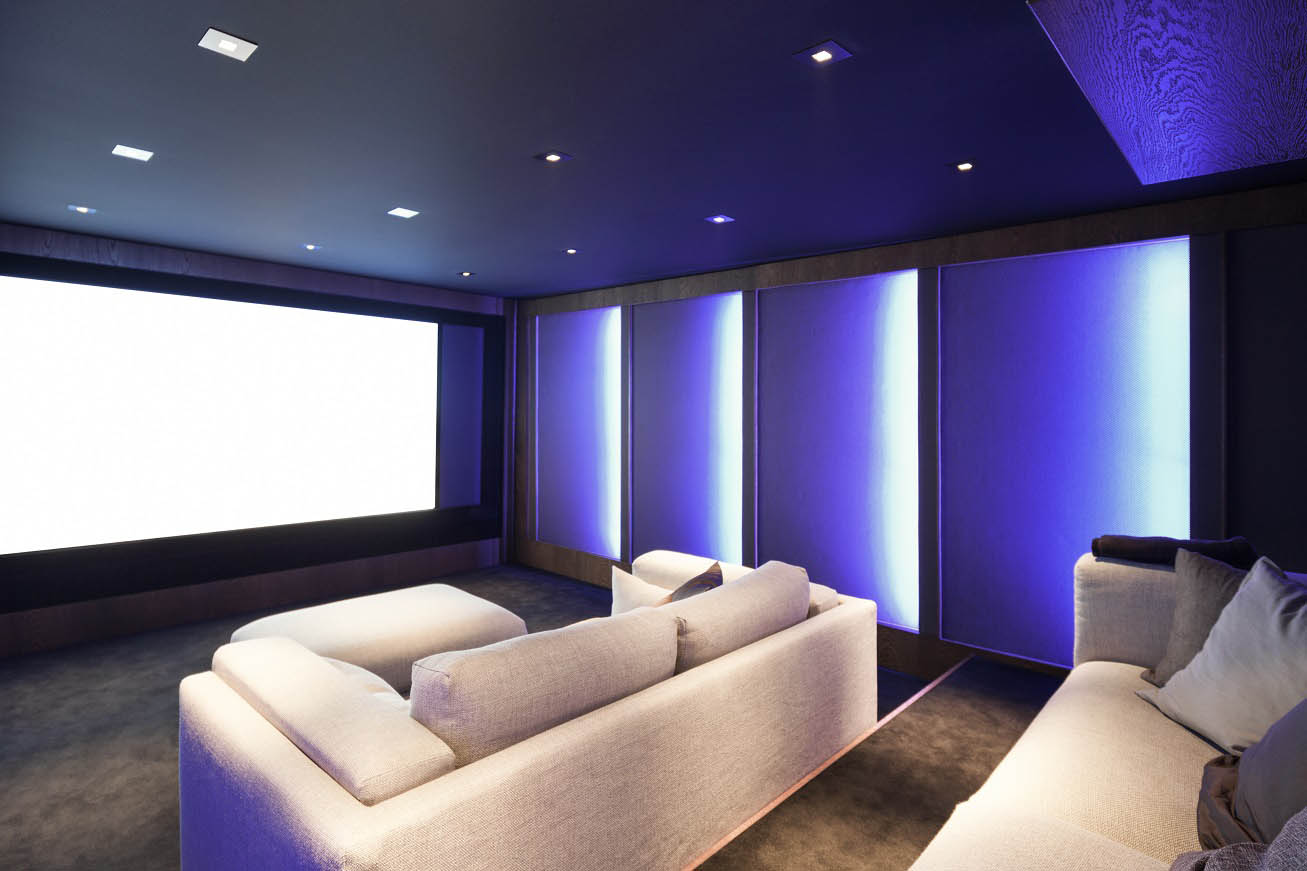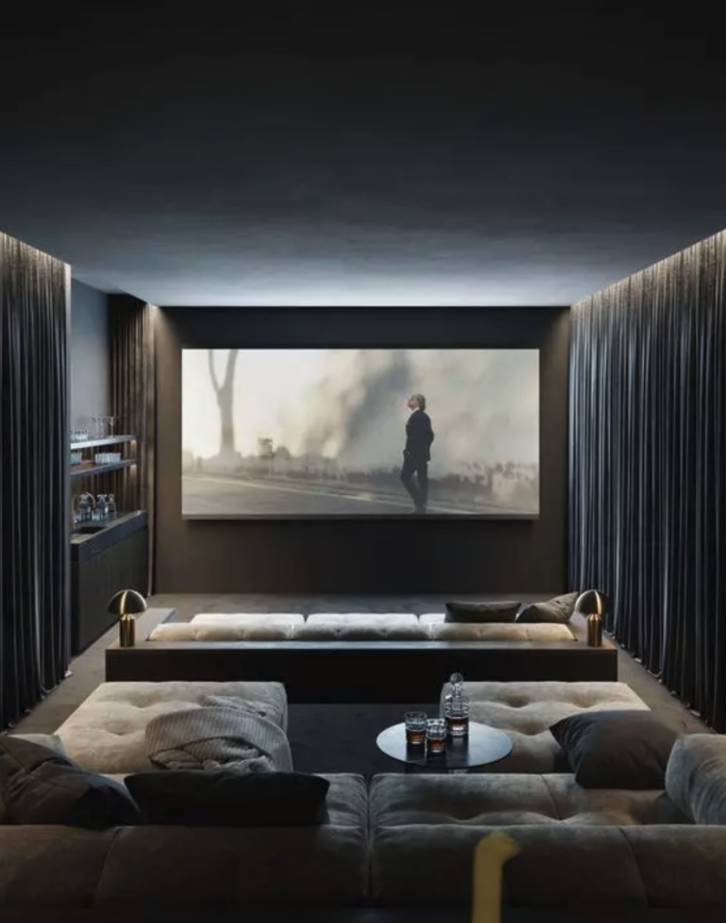Home Theater 101: Everything You Need to Know for a Cinematic Experience at Home
Developing a home theater that measures up to the motion picture experience of a commercial theatre includes cautious factor to consider of numerous parts, including screen choice, audio systems, and room format. Whether you are contemplating the suitable display size or the details of surround noise, recognizing these fundamentals is vital.
Choosing the Right Screen
When establishing a home theater, picking the appropriate display can make or break the checking out experience - home theater design tampa. The display works as the centerpiece of your setup, influencing photo quality, seeing angles, and overall visual. Trick variables to consider include screen resolution, type, and dimension
Initially, figure out the proper display dimension based on your room measurements and seating distance. Next, pick between various screen kinds, such as fixed-frame, motorized, or retracting displays, each offering distinct advantages.
Resolution is an additional important factor. For a truly immersive experience, consider a screen developed for 4K or perhaps 8K content, making certain intensity and clarity. In addition, think about the display's gain, which impacts illumination and contrast; a greater gain can improve illumination in well-lit spaces, while a reduced gain might be preferable for darker settings.
Choosing Audio Equipment
Audio equipment is a vital component of any type of home cinema system, significantly enhancing the total watching experience. The choice of audio equipment can determine the deepness, clarity, and immersion of sound, important for producing a cinematic environment.
When choosing audio devices, think about a border stereo, which commonly consists of a receiver, multiple audio speakers, and a speaker. A 5.1 or 7.1 channel system is suggested, where the initial number stands for the speakers and the second the subwoofer, offering an immersive soundscape. The receiver is the heart of the system, handling audio and video clip signals, and must support modern formats like Dolby Atmos for an enhanced spatial experience.
Quality speakers are important; search for models that supply a balanced sound profile with good bass reaction. Floor-standing audio speakers can create richer sound, while bookshelf choices conserve area. In addition, consider cordless options for convenience of setup, although wired systems usually deliver superior efficiency.

Ideal Seating Arrangements
Developing a perfect home cinema experience hinges substantially on ideal seating arrangements. The setup of seats plays an important function in both convenience and viewing top quality, straight impacting the general motion picture experience.
First, take into consideration the display dimension and seeing range. A typical standard is to position seats at a range approximately 1.5 to 2.5 times the diagonal size of the display. This guarantees an immersive experience without stressing the eyes.
Following, elevation is vital. If your seating is in a tiered style, the back rows must be greater than the front to website here avoid blockages. For level seats, ensure that the front row is not too close to the screen, and that everybody has a clear view.
Furthermore, think about the arrangement in regards to social dynamics. Group seating can boost the common experience, while specific seats might be preferred for individual watching.

Last but not least, prioritize comfort with ergonomic seats that supports extended watching periods. Incorporating recliner chairs or supported seats can dramatically improve the experience, making the home theater a favored location for both enjoyment why not find out more and relaxation.
Lighting and Atmosphere
Effective lights and ambiance are important elements of a properly designed home theater, as they considerably influence the checking out experience. The appropriate lights can boost the motion picture feeling, while poor choices can take away from it. For optimum results, consider a split illumination approach that consists of ambient, job, and accent lights.
Ambient illumination gives general lighting, making certain that the room is not entirely dark, which can stress the eyes. Dimmer switches are highly advised, enabling for modifications based on the web content being checked out. Job lighting, such as wall surface sconces or floor lamps, offers useful illumination for activities like analysis or navigating the room without disrupting the total ambience.
Accent illumination can be used to highlight building attributes or develop focal points, including deepness and rate of interest to the room. LED strip lights behind displays or along shelves can provide a subtle radiance that improves the aesthetic experience without overwhelming the viewer.

Wiring and Installation Tips
A well-planned wiring arrangement is vital for accomplishing optimal performance in your home movie theater system. Correct circuitry not only ensures top notch sound and video signals yet additionally boosts the total visual of your room. Begin by drawing up your design, identifying where each component will certainly be put, including your display, speakers, and receiver.
When choosing cable televisions, focus on high-quality, properly evaluated circuitry to lower signal loss. HDMI find more information cords ought to be made use of for video clip connections, while speaker cord should match the specs of your audio speakers and amplifier. Choose in-wall ranked cords to conform with security criteria and maintain a clean appearance.

Final Thought
In recap, producing an extraordinary home movie theater experience needs mindful factor to consider of various components, including display option, audio tools, seating arrangements, illumination, and electrical wiring. Each part plays an important role in accomplishing optimum performance and atmosphere, ultimately improving the pleasure of home entertainment. By prioritizing these elements, a cinematic environment can be effectively replicated, enabling immersive viewing experiences that rival traditional theater settings. Attention to detail in each location is vital for total fulfillment.
Producing a home movie theater that rivals the cinematic experience of an industrial theatre involves careful consideration of several components, including screen selection, audio systems, and space layout.When setting up a home theater, choosing the appropriate display can make or damage the watching experience. Next, pick in between numerous screen kinds, such as fixed-frame, motorized, or retracting displays, each offering distinct advantages. For a genuinely immersive experience, think about a display made for 4K or even 8K material, ensuring sharpness and clearness.In recap, creating an extraordinary home movie theater experience calls for cautious consideration of numerous components, including display selection, audio tools, seating plans, lights, and electrical wiring.